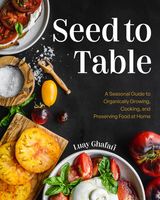Advertisement
Freezing the Harvest
Appears in
By Luay Ghafari
Published 2023
Freezing is an easy and accessible way to preserve your harvest to use throughout the winter months. If handled correctly, frozen fruits and vegetables can brighten up any dreary winter day. A few tips to make this as seamless as possible:
- Produce should be washed and thoroughly dried before freezing.
- Consider pre-freezing smaller produce like berries and cherry tomatoes on a tray first and then transferring to freezer bags or containers. This reduces the likelihood of clumping.
- Certain crops benefit from blanching before freezing. These include leafy greens such as kale, chard, and spinach. Green beans can also be blanched for 30 seconds before freezing.
- Certain crops will require processing before freezing. For example, zucchini should be shredded and squeezed to remove as much liquid as possible before freezing. Eggplant can be roasted and pureed before freezing.
- Hot peppers will lose some of their heat in the freezer.
- Remove as much of the air as possible from your freezer bag or container. Not only does this save space, but it will also reduce the chance of freezer burn. A vacuum sealer is a good investment.
- Herbs can be submerged in olive oil or water and frozen in ice cube trays. These flavor-packed cubes can be used at a later time to make pesto, marinades, or salad dressings.
- Try to use your frozen produce within 6–12 months. Any longer and the flavor and/or texture may be compromised.

